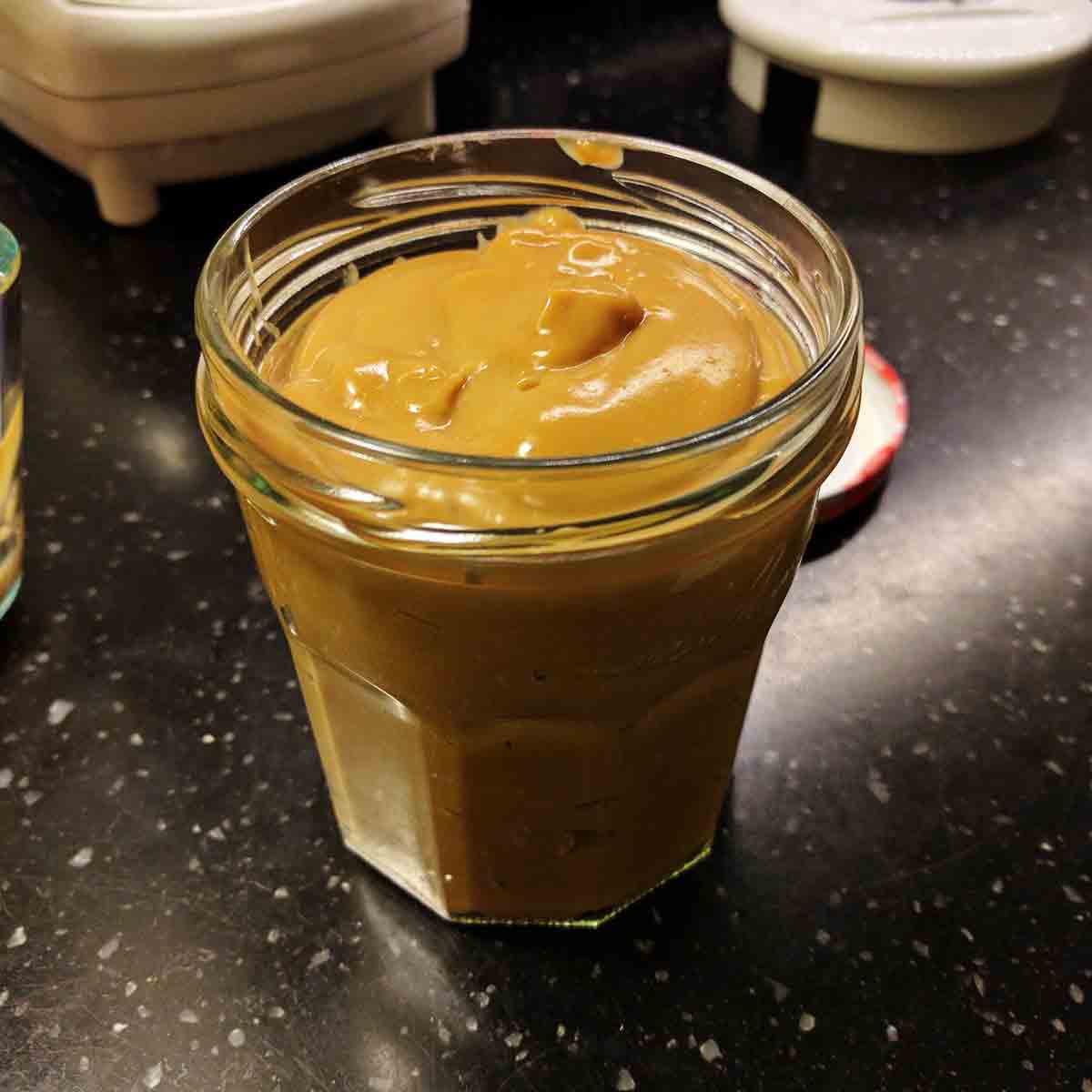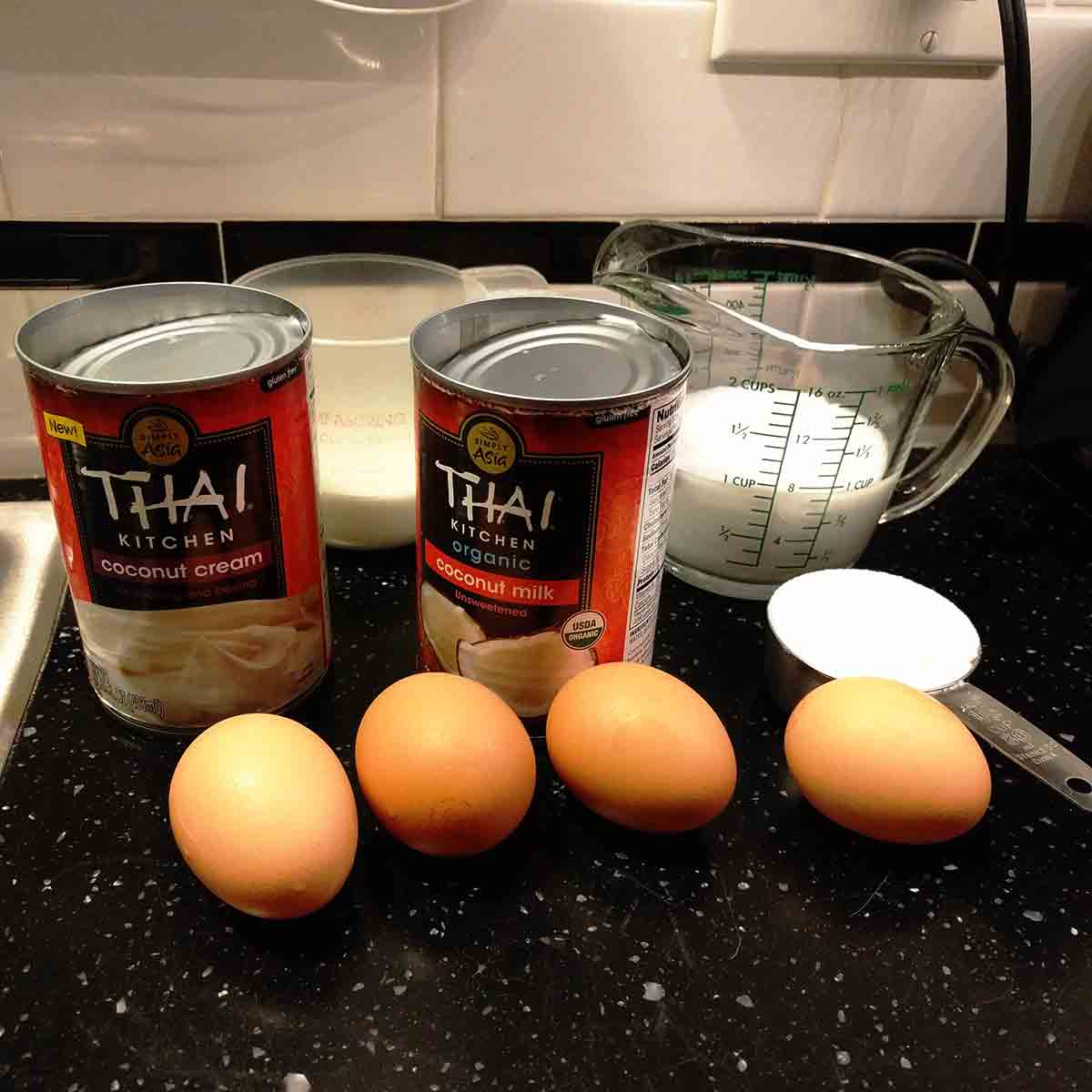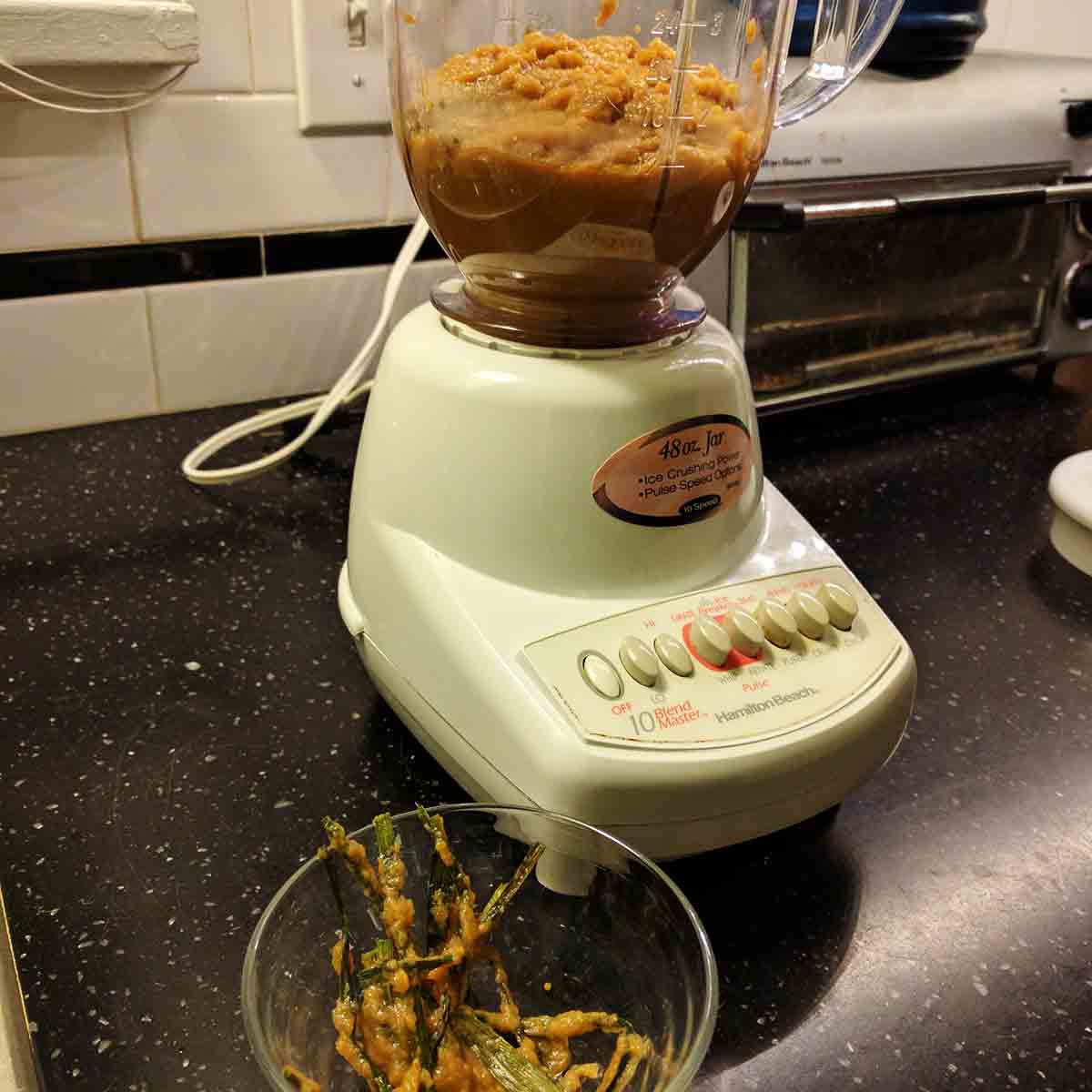Kaya (Coconut Jam)
Kaya (Coconut Jam)
 I first had this in Singapore as part of a kaya toast breakfast. This is the recipe for the kaya (coconut jam), but I also include notes on how to do the entire breakfast at the bottom. Be warned — I am trying to recreate something I only had a few times and I am doing it by cobbling together recipes I found online and my own experiments. Remember, I am a white guy from Buffalo.
I first had this in Singapore as part of a kaya toast breakfast. This is the recipe for the kaya (coconut jam), but I also include notes on how to do the entire breakfast at the bottom. Be warned — I am trying to recreate something I only had a few times and I am doing it by cobbling together recipes I found online and my own experiments. Remember, I am a white guy from Buffalo.
Information
- Makes:
- 20 ounces
- Twenty 1 ounce servings
- Time:
- Calories:
- 1,320 calories for the batch
- 66 calories per 1 ounce serving
Ingredients
- 4 eggs
- ⅓ cup of sugar
- ½ cup coconut cream
- ¾ cup coconut milk
- 3 bunches of pandan leaves, knotted
- 1½ tablespoons of corn starch
- 1½ tablespoons of water
- 4 tablespoons of sugar
Method
I have photos for each major step. They are not great photos, but they at least show what I had so you can compare and/or mock.
- Mix the eggs, coconut cream, coconut milk, and sugar in a bowl until smooth (photo 2).
- Mix the water and corn starch. Set aside.
- Tie the pandan leaves into 3 separate knots (this makes them easier to retrieve later) (photo 3).
- Put the egg mixture in a saucepan and add the pandan leaves (knots). Cook on medium low for about 20 minutes, stirring the entire time (I prefer to use a wooden spoon) (photo 4).
- While the egg mixture is cooking, heat the 4 tablespoons of sugar in a small saucepan until melted.
- While the egg mixture is cooking, add the corn starch mixture to the kaya. Do not worry about the lumps, just keep stirring.
- While the egg mixture is cooking, add the melted sugar. Keep stirring (photo 5).
- At the end of 20 minutes, let the egg mixture cool.
- Discard the pandan leaf knots. Look for any loose leaves if your knots came undone.
- Put the mixture in a blender and blend until smooth (photo 6).
- Transfer to a storage container (photo 7).
Potentially Helpful Photos
I link the appropriate step to the image below, but I suspect they are self-explanatory.







Kaya Toast
Now that you have the kaya, you can have the kaya toast experience. I will just describe the process, you can decide to adjust or correct as you see fit.
Soft boil or poach or otherwise cook a couple eggs so that the yolks are still runny. When you get the eggs into a bowl or onto a plate to eat, top with some white pepper and soy sauce.
Get some dense white bread. Toast two slices and then butter it. I prefer chilled slices off a stick of butter. Then cover each slice with kaya. Press them together into a weird butter kaya sandwich and slice it into strips.
Dip the strips in the runny eggs. Wash down with black coffee.




Notes
- Make sure you get coconut cream and coconut milk that do not have other ingredients in them, particularly sugar. I made this mistake when grabbing a can of Goya coconut cream.
- As you pour the carmelized sugar into the kaya mixture, note that this may cause the eggs to set immediately, so be prepared to slowly introduce it while stirring.
- Since the coconut cream and coconut milk separate, and you have to mix each one to make it consistent, also measure them out into freezer bags so you can just throw them into your next batch. Much better than trying to figure out what to do with the separating leftovers.

